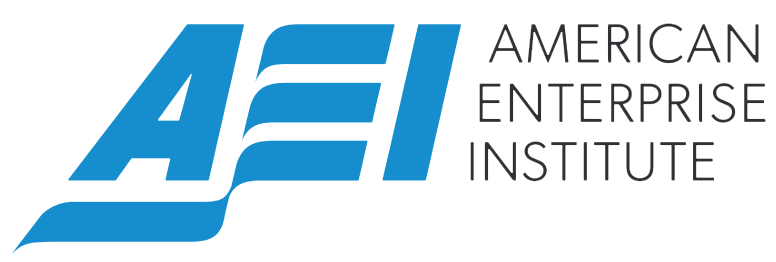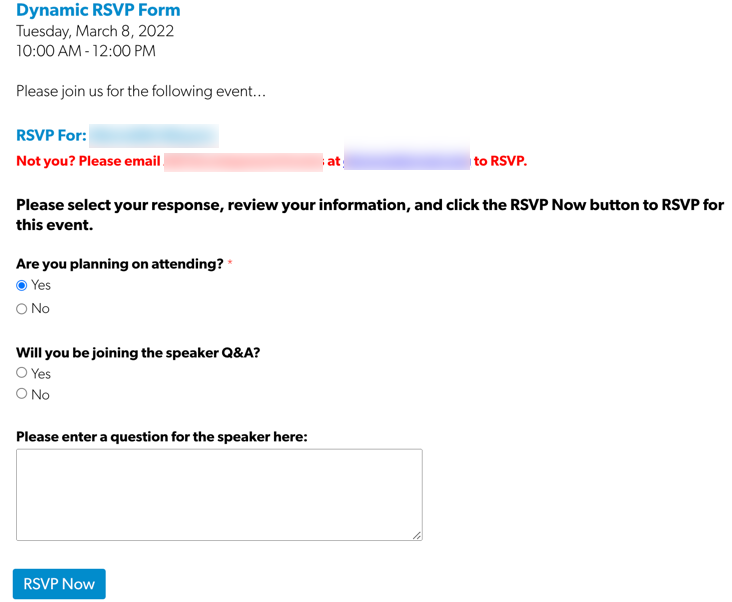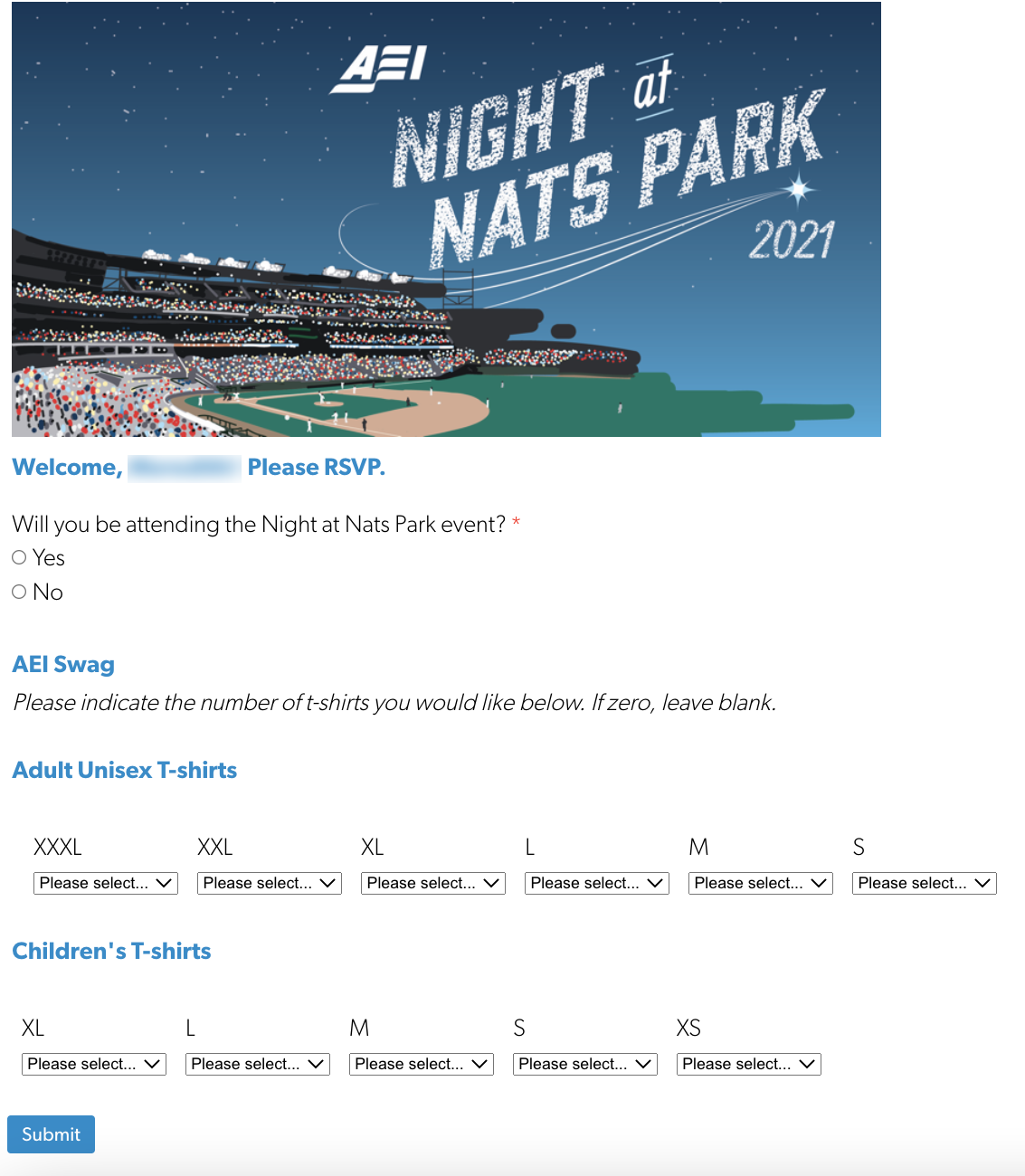

The numbers
7
core public policy areas
105+
resident, visiting, and adjunct AEI scholars
300+
forms in use
12,000
responses collected in a given year
Use cases
Event Management and RSVPs
Event management and RSVPs
AEI uses FormAssembly heavily for event management and RSVP processes. This provides the flexibility to change forms based on whether the event is public (as is the case with forms posted to the main website) or private for scholars and internal staff.
These forms aren’t just requesting a “Yes” or “No” about attendance. For public and co-sponsored events, forms collect information about guest’s private travel accommodations and other on-site needs. AEI has been able to streamline workflows to reduce the amount of random or sporadic emails between the organization and event attendees. Additionally, the Prefill Connector allows attendees to change their responses, and these updates are immediately reflected in Salesforce, eliminating the manual updates from staff.
FormAssembly allows the events team to create practical forms without involving IT or undergoing advanced coding. Using FormAssembly has increased the level of internal buy-in, particularly through the use of flexible forms that use parameters from the Campaign Record in Salesforce to create new, branded forms on short notice.

Internal Data Import Forms
Internal data import forms
AEI also manages several internal data input forms for donor management, gifts, and what is referred to as scholar “product.” AEI doesn’t sell a physical object or service; instead, they produce ideas. Those ideas are disseminated via books and reports, articles and blog posts, podcasts and videos, speeches and government testimony, etc. At AEI they track all of their scholar output in Salesforce under a custom object called “AEI Products”, that are then tagged by type (book, publication, video, testimony, etc.), by scholar, etc. and sometimes even by grant code. Those products are also linked to events and mailings to measure impact.
Meredith created a FormAssembly input form to make it easier for interns to enter items into Salesforce. FormAssembly’s dynamic picklist feature made this more efficient and improved data quality.

Don’t just collect data
— leverage it.